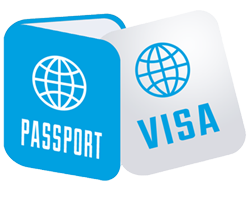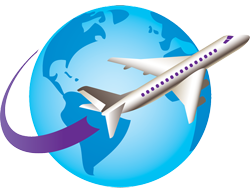Each atoll in the Maldives is made of a coral reef encircling a lagoon, with deep channels dividing the reef ring. A string of islands take their places among this atoll ring; each island has its own reef encircling the island lagoon. The reefs of the islands, alive with countless types of underwater creatures and vibrant corals, protect the islands from wind and wave action of the surrounding vast oceans. This unique structure of reefs and channels makes navigation almost impossible for the passer-by without sufficient information about these waters.
Ninety-nine percent of the Maldives is made up of sea. The people of the islands are widely dispersed across the atolls, with about 200 inhabited islands. About 90 islands are developed as tourist resorts and the rest are uninhabited or used for agriculture and other livelihood purposes.
Earth Trip specialises in compiling a bespoke itinerary to match your tastes and preferences. Call us today to get expert advice on your holiday plans.

A tourist visa will be issued at Malé International Airport provided that the visitor satisfies all of the following conditions:
To enter the Maldives no pre-arrival visa is required.
A thirty day free visa is issued on arrival for all Nationalities, provided:

Please consult your doctor for any further health advice.
Visit your health professional at least 4 to 6 weeks before your trip to check whether you need any vaccinations or other preventive measures.
Check the latest country-specific information and advice from the National Travel Health Network and Centre (NaTHNaC) on the TravelHealthPro website or from NHS (Scotland) on the fitfortravel website. Useful information and advice about healthcare abroad is also available on the NHS Choices website.
UK health authorities have classified the Maldives as having a risk of Zika virus transmission. For more information and advice visit the National Travel Health Network and Centre website
Medical facilities are limited. There are only 2 hospitals and these are on the capital island, Malé. Neither has a trauma unit. Although most resort islands are within easy reach of a doctor, many are several hours’ travel away from the hospital facilities on Malé. Many resort islands are more than an hour away from the nearest decompression chamber.
Make sure you have adequate travel health insurance and accessible funds to cover the cost of any medical treatment abroad and repatriation.
If you need emergency medical assistance during your trip, dial 102 and ask for an ambulance. You should contact your insurance/medical assistance company promptly if you are referred to a medical facility for treatment.

The Maldives has two distinct seasons; dry season (northeast monsoon) and wet season (southwest monsoon), with the former extending from January to March and the latter from mid-May to November.
The rare thunderstorm in the Maldives, especially around the southwest monsoon months can be a welcome respite from the sun. Cloudy skies and slate grey seas, and crashing thunder makes up for lovely reading weather. The warm temperatures will allow you to go for a walk in the rain, a verdant, wet, thoroughly enjoyable experience. For extra exhilaration, take a swim in the rain – the sea will be extra warm.
The northern atolls have the highest rainfall from May-November and the rain reaches the southern atolls from November-March.
| Jan | Feb | Mar | Apr | May | Jun | Jul | Aug | Sep | Oct | Nov | Dec |
| +++ | +++ | +++ | +++ | ++ | ++ | +++ | +++ | +++ | ++ | ++ | +++ |
+++ the best time to visit
++ good time to visit
+ good time with some rain expected
| Jan | Feb | Mar | Apr | May | Jun | Jul | Aug | Sep | Oct | Nov | Dec | |
| °C | 27 | 28 | 29 | 29 | 28 | 28 | 28 | 28 | 27 | 27 | 27 | 27 |
| °F | 81 | 82 | 84 | 84 | 82 | 82 | 82 | 82 | 81 | 81 | 81 | 81 |
| Jan | Feb | Mar | Apr | May | Jun | Jul | Aug | Sep | Oct | Nov | Dec | ||||||||||
| mm | 75 | 50 | 73 | 132 | 216 | 172 | 147 | 188 | 243 | 222 | 201 | 232 | |||||||||
| Days | 5 | 5 | 7 | 10 | 15 | 14 | 13 | 14 | 15 | 16 | 14 | 13 |
Month by month weather
January to April
Pleasant hot temperatures, clear blue skies, minimal rain fall, make this one of the best times to visit the Maldives. The Indian Ocean will be calm and the underwater visibility will be very good, so it is ideal for sun-seekers and snorkellers alike.
May – September
Despite wetter months, the weather is still good. You may experience few showers and increased humidity. Saying this, keep in mind that the rain will usually clear very fast. Considered as low season, the prices are lower, temperatures are high and rains are not constant, meaning it is an excellent time to visit. As most islands have an in-house reef, you will be able to snorkel there.
During the rainy season it tends to rain a bit more at night, which means that the actual daytime rain that visitors see is even more consistent than it first appears. Even during the rainy season it’s rare to have more than a few cloudy days per week, so it would be very bad luck to see much grey during an average holiday.
October – December
Mid of October is the end of the wet season in the Maldives. Hot, dry weather returns to the islands. Expect long days of sunshine and temperatures in the range of 30 degrees. This is a very popular time to travel.

International flights arrive at Malé’s International airport (MLE) also known as Velana International Airport, which is on an island of its own called Hulhule.
There are scheduled services with British Airways, Emirates (via Dubai), Etihad (via Abu Dhabi), Turkish Airlines (via Istanbul), Qatar (via Doha), Swiss Airlines (via Zurich), Oman Air (visit Muscat), Air Sri Lanka (via Columbo) and Singapore Airlines (via Singapore).
Direct scheduled service with British Airways fly from London Gatwick.
Transfers from the Malé International airport to your resort island are either by boat, seaplane or domestic flight, depending on the distance. If your resort requires a seaplane transfer, there are a few things to be aware of: the seaplanes only operate in daylight hours, so if you arrive after sunset you will have to stay in Malé overnight before being able to transfer to your resort.
Likewise if your flight home is early in the morning – you will leave your resort in the afternoon. The seaplane journey in itself is an experience, as you get stunning views of the atolls – make sure you get a window seat and that you get your camera out before boarding (your hand luggage will probably be put at the back of the plane as there is no space under or over the seats). The seaplane will usually land next to a floating platform, from which you will be picked up by boat to be taken the remaining few metres in shore to your resort.
Thoughtful thoughts to your inbox